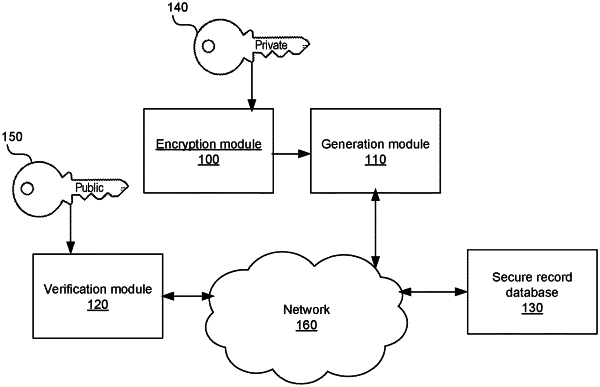| CPC H04L 9/3236 (2013.01) [H04L 9/0643 (2013.01); H04L 9/088 (2013.01); H04L 9/30 (2013.01)] | 19 Claims |

|
1. A method of efficiently adding a new block to a block chain, the method comprising:
providing the block chain comprising a plurality of blocks, each block comprising a hash value;
obtaining, by the block chain, a private identification of an authorized user in a subset of one or more authorized users, non-currency data not susceptible to a double spending problem, and a private key of the authorized user, the non-currency data configured to be verified in association with the authorized user before being added to the block chain; and
adding a new block to the block chain including:
encrypting the non-currency data based on the private identification of the authorized user;
computing the hash value of the non-currency data and the encrypted data for the new block;
obtaining a prior hash value associated with a preceding block in the block chain;
forming the new block as a function of the non-currency data, the encrypted data, the hash value, and the prior hash value to create the new block;
adding the new block to the block chain by performing a proof of work computation that requires the computed hash value to have required values at a reduced number of computed hash value positions;
using the obtained prior hash value associated with the preceding block and storing the prior hash value within the new block;
computing a second hash value from the non-currency data and the encrypted data, and comparing the hash value of the non-currency data to the second hash value; and
verifying a sequence order of blocks of the block chain by checking that the hash value of an immediately preceding block stored within the block is identical to a hash value stored within the immediately preceding block.
|